Let’s get one thing clear: everyone can respirate. That’s how you stay alive. Not everyone can breathe. I love this statement. I’m far from the first one to use it.
This distinction matters. If you’ve never paid attention to your breath, you’re probably not breathing as well as you should. Just try this right now: breathe in deeply through your nose. Your posture immediately improved didn’t it? This is a very basic example of the profound impact breathing well can have on your life.
Let’s break it down a little more. For starters, let’s recognize that your lungs aren’t muscles. Let’s imagine them as plastic bags. They cannot inhale on their own. Our diaphragm and, to a lesser extent, our intercostals (muscles between the ribs) must create a vacuum into which the air is pulled.
Many of us only create this vacuum with our ribcage. I like to call this “hulk breathing” because they look like they’re on the verge of turning big, green, and angry. That’d be cool if it happened, but since it doesn’t, it just looks weird and unnatural. If you can imagine the shape of your lungs, this ribcage/chest breathing only really pulls air into the “bottleneck” at the top, and not further down into the true body of the lung.
This is where our diaphragm, with the help of our pelvic floor, comes into play. It’s able to take all of our “guts” and push them down, lower into our abdomen. This creates a massive vacuum that fills the whole body of the lung. Teaching our gym members how to tap into this type of breathing increases their fitness and endurance to a surprisingly effective degree. You should still always work to improve your fitness, but imagine if simply changing the way you breathe gave you more gas. Like, a lot more.
Our breathing blog will be a multi-post series. While the diaphragm is one of the most important pieces to this puzzle, I don’t like starting the discussion there. We’ll talk about the diaphragm more in future posts. For today, we’re going to leave you with one of our most basic breathing drills. There are a few others I like equally for beginners, but this one will be a great baseline to test. When you come back and do this in the future, the hope is that you can notice a legitimate difference. If need be, snap some pictures as I have below, to test your breathing quality:
Lie on your back with your knees up and feet flat on the ground. This should be a comfortable position for you. Rest one hand on top of your chest, and the other on top of your belly button.
Deeply inhale through your nose. The hand on your belly button should rise first. Only at the very end of your inhale should your chest rise. It’s ok to cheat here: If you simply inhale and push your belly out, that’s actually not a bad way to get your diaphragm “back online”.
This drill is great both post-training, and before bed. Try to integrate this as much as possible. To enhance your breathing, try to add a tempo to your breath: make your exhale twice as long as your inhale. Either inhale 3 seconds, exhale 6, or if that’s too easy, inhale 4 seconds, exhale 8. We will be posting more drills in the future to help you breathe more efficiently. For now, give this basic drill some practice and see how it goes!





